Rose Cabaret
Hybrid tea roses make up a very noticeable part of the entire market for these plants. They have long been appreciated by gardeners and lovers of beautiful flowers for their unpretentiousness, long flowering, and, of course, for their appearance. One of the representatives of this group of roses is our heroine, about which we will tell in more detail.
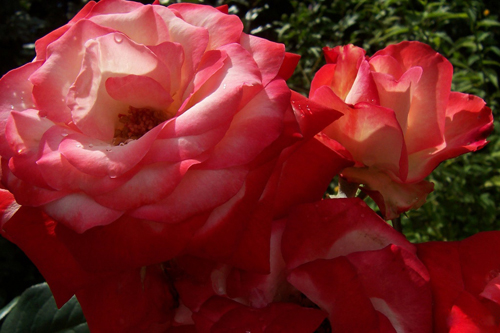
How did the variety come about?
There is evidence that this variety was bred in 1992 by the French breeder Louis Laperriere. He gave the new cultivar the registration name LAPed, which is sometimes added to the commercial name to distinguish it from other namesake roses that we will mention later.
Despite a rather long history of life, Cabarete does not leave the market, remaining in demand and popular rose of the hybrid tea group.
Description of appearance
The described rose belongs to the two-color type, because in the color of its flower there are soft transitions from white to pink, and even reddish. The base of the opened flower is whitish-cream, but the closer to the edge of the petals, the more pink the color becomes, with an increase to soft coral. One gets the impression that the initially white bud was dipped with its tips in a weak reddish solution. There are not so many roses in the world whose flowers can compete with this delicate, pastel pink miracle, playing with subtle, subtle color transitions!
The flower itself is semi-double, densely double, with many petals, which, opening up, noticeably bend. The most impressive period is when the bud is half open, subsequently the petals take on a slightly sloppy shape. Flowering continues throughout the season, until the onset of cold weather.
On each shoot, mainly one flower appears, although often there are two, and sometimes even three. The sizes of flowers vary from 8 to 11 cm, a bouquet of Cabarete roses impresses with a harmonious and gentle transition from one color to another, sometimes creating the impression that it contains flowers from several varieties.
The bush itself is of medium size, from one meter to 1.25 m high, about a meter wide. Shoots are straight, strong and tough. On such, rather strong branches, smallish, but densely planted petals of a dark green color grow.
Let's remember about "doubles"
As often happens in the world of roses, this one also has "namesake" by name. They are much less common on sale, inferior to our heroine in popularity.
Cabaret (miniature, Warriner, 1983)
A dark red miniature rose of American selection, bred in 1983 by William Warriner. The flowers are small, with two to three dozen petals, and give off a strong fruity odor. Awarded the registration name JACaret and a trade patent from 1985.
Cabaret (Interplant)
A Dutch bred flower, registered in 2001 as INTerbijleeg. Belongs to the floribund group, has orange flowers.
Features of agricultural technology and use
Cabaret is frost-resistant and can be grown outdoors in zones 6 through 9, according to the United States Department of Agriculture (USDA). Without shelter, it can withstand up to -15 °, but in temperate climates it is still necessary to cut and cover it.
The disadvantage is poor resistance to some diseases, in particular, powdery mildew and black spot. Requires regular preventive treatments.
Used primarily for cutting. Stored in a vase for a long time, it is considered a classic “rose of the bride”, symbolizing tenderness, freshness and beauty. It is also suitable as a garden plant, looks great in a flower garden, as a separate bush against the background of the dark foliage of other trees. However, this rose is beautiful in itself, and often does not need additional "entourage".
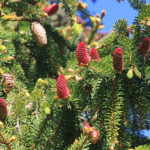

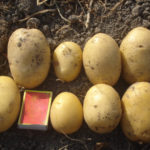
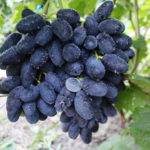
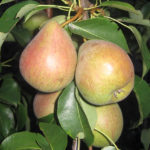
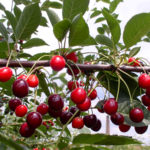



This variety was subscribed to on the Internet solely for the sake of sale. In the buds Cabarete looks amazing: the creamy-powdery center is as if wrapped in outer petals of the bright color of dawn. With a glass height of up to 8 cm and a strong long stem, customers do not pass by. Bridal bouquets of these roses come out amazingly delicate. But the smell is faint and more peony with something fruity. He does not like rain and fog very much. In dampness, the flowers, if they open, they look sloppy floating. And the black spot clings to this rose in an instant. We must not forget about constant prevention. Once a week I water the bushes with potassium permanganate dissolved to dark pink. With additional treatments on the leaves, when it comes up, we somehow avoid this disease.